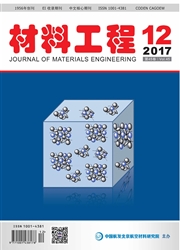

 中文摘要:
中文摘要:
以C3H6(丙烯)+H2,MTS+H2,CH4+BCl3+H2,C3H6(丙烯)+BCl3+H2为先驱体,采用量子力学结合统计热力学、变分过渡态理论和反应动力学等方法,研究制备典型陶瓷(C,SiC和BxC)的化学反应机理。重点阐述用精确量子化学方法获取可能中间体、过渡态的结构与热化学数据、用化学势极小原理确定复杂体系化学平衡规律,以及确定化学反应通道、最佳反应途径、速率常数和反应动力学规律等。为这些陶瓷材料应用于层状碳、抗氧化SiC以及自愈合BxC陶瓷的成分控制和工艺优化提供科学基础的同时,本文也指出理论方法中的不足和改进方向。
 英文摘要:
英文摘要:
The chemical reaction mechanism of preparing typical ceramics(C,SiC and BxC)was studied,using C3H6(propylene)+H2,MTS+H2+Ar,CH4+BCl3+H2,and C3H6(propylene)+BCl3+H2as precursors,and based on the quantum mechanics combined with statistical thermodynamics,variational transition state theory and chemical reaction kinetics.The thermochemistry data are predicted in a prescript high accuracy.The process is to determine as many as possible the reaction intermediates and transition states,to develop their thermochemistry data,to examine the reaction thermodynamics properties of the reaction system,to identify the possible reaction pathways,to evaluate the rate constants of the most favorable paths,and to explore the reaction rates.These researches are scientifically instructive to the composition control and processing optimization for layered carbon,antioxidation SiC and self-healing BxC.Problems concerning the theoretical methods are also proposed to be further studied.
 同期刊论文项目
同期刊论文项目
 同项目期刊论文
同项目期刊论文
 Modeling of pore structure evolution within the fiber bundle during chemical vapor infiltration proc
Modeling of pore structure evolution within the fiber bundle during chemical vapor infiltration proc Structural, elastic and electronic properties of transition metal carbides TMC (TM=Ti, Zr, Hf and Ta
Structural, elastic and electronic properties of transition metal carbides TMC (TM=Ti, Zr, Hf and Ta First-principles study of the structural, vibrational, phonon and thermodynamic properties of transi
First-principles study of the structural, vibrational, phonon and thermodynamic properties of transi Surface relaxation and oxygen adsorption behavior of different SiC polytypes: A first-principles stu
Surface relaxation and oxygen adsorption behavior of different SiC polytypes: A first-principles stu Effect of C/B ratio in reactants on low-pressure CVD boron-doped carbon deposited from a BCl3-C3H6-H
Effect of C/B ratio in reactants on low-pressure CVD boron-doped carbon deposited from a BCl3-C3H6-H Adsorption of atomic and molecular oxygen on 3C-SiC(111) and ((111)over-bar) surfaces: A first-princ
Adsorption of atomic and molecular oxygen on 3C-SiC(111) and ((111)over-bar) surfaces: A first-princ Thermodynamics of the gas-phase reactions in chemical vapor deposition of silicon carbide with methy
Thermodynamics of the gas-phase reactions in chemical vapor deposition of silicon carbide with methy Structure and piezoelectric properties of poly(vinylidene fluoride) studied by density functional th
Structure and piezoelectric properties of poly(vinylidene fluoride) studied by density functional th Thermodynamics of the gas-phase reactions in chemical vapor deposition of silicon-carbide with Methy
Thermodynamics of the gas-phase reactions in chemical vapor deposition of silicon-carbide with Methy 期刊信息
期刊信息
